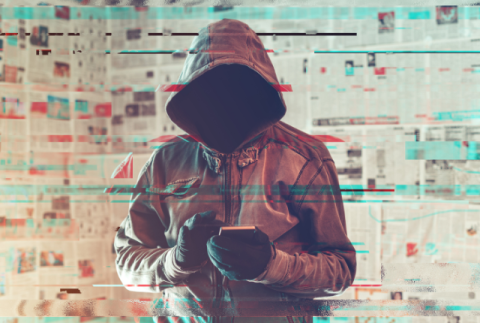TikTok and the War on Misinformation
November 13, 2023In the constantly evolving landscape of social media, TikTok reached 1 billion users in just over five years, making it one of the fastest growing platforms ever. Because of its popularity, however, the platform has seen a deceptive wave of misinformation proliferating across the app that can mislead and confuse users. As major social media platforms and tech giants are facing questions about their role in allowing — and at times facilitating — the spread of misinformation, TikTok’s place in the social media market and popularity with younger users make it a prime target for scrutiny.
Understanding and Identifying Misinformation
Misinformation is false or misleading information, designed to manipulate someone’s perception of reality to advance a particular agenda. When done intentionally to cause harm, the phenomenon is known as disinformation.
With its short-form video content, TikTok provides the ideal platform for both misinformation and disinformation to pass as credible in part because content creators’ popularity may be misinterpreted as expertise, even where it doesn’t exist. Video length is capped at three minutes and most videos last less than 45 seconds, so there is little time to provide context and establish a nuanced discussion. A 2022 report found that roughly a fifth of TikTok videos contain misinformation.
TikTok, like nearly all forms of media, is susceptible to misinformation that lures users with sensational headlines, hyperbolic language, and emotional triggers. These tactics exploit the user’s curiosity with exaggerated or misleading content that promises groundbreaking revelations, expose scandals, or offer miraculous solutions. Their design is to induce a sense of urgency, prompting users to click and engage without deeper thought. Misinformation often thrives by distorting facts or fabricating claims, making it difficult to distinguish from the truth. These claims often can’t be substantiated with credible sources. Instead, they rely on personal anecdotes or baseless assertions that may be connected to real events but otherwise distort or invent details. While personal experiences can be valuable, they should not serve as the sole basis for drawing conclusions.
TikTok’s highly visual platform fuels misinformation, as content often leverages eye-catching visuals and captivating soundbites to elicit emotional responses. A user’s more visceral response may cloud their judgment and lead them to avoid critical thinking. Similarly, catchy phrases and soundbites are commonly used to embed misinformation in the user’s mind.
TikTok's Role in Fueling Misinformation
TikTok's design, where future content is driven largely by past interactions with similar content, contributes to the rapid spread of misinformation. Users who engage with misleading content are more likely to be shown similar videos, creating an echo chamber where misinformation flourishes. One of the most common categories of misinformation across the platform is false and misleading health claims. In 2020, a video falsely claimed that consuming garlic could prevent COVID-19, leading to widespread sharing despite a lack of scientific evidence. In 2021, another video falsely claimed that COVID-19 vaccines were magnetic, causing some individuals to question and even refuse vaccination. And scores of videos have created and amplified claims that 5G technology causes cancer.
TikTok gives rise to and spreads countless conspiracy theories about political groups, including those driven by the current conflict between Israel and Palestine, scientific facts, such as the belief that the earth is flat, and historical events, like the myth of the faked moon landings. This misinformation can also pose significant national and cybersecurity risks.
TikTok's Efforts to Combat Misinformation
Responding to pressure from governments around the world, TikTok has publicly recognized the gravity of their role in spreading misinformation and has taken steps to mitigate its impact. They have collaborated with reputable fact-checking organizations like PolitiFact and Snopes to identify and remove false or misleading content from the platform. They have introduced tools to help users identify and report misinformation. And they’ve launched educational campaigns aimed at helping users recognize and avoid misinformation through videos, articles, and quizzes.
When videos are uploaded to TikTok, they are reviewed by an automated moderation system that scans for violations of the platform’s community guidelines, such as nudity or threats to child safety. If the content is flagged, it is often reviewed by one of TikTok’s tens of thousands of content moderators who evaluate the content with more context and nuance. From April-June 2021, more than 81 million videos were removed from the platform for these violations.
Misinformation is not unique to TikTok, and despite the platform's efforts, it’s unlikely that it can be eliminated entirely. However, tech giants like TikTok have a responsibility to address this issue through technical and non-technical interventions. Otherwise, the consequences of misinformation may spread as quickly as the misinformation itself.
To learn how Capitol Technology University can prepare you for a career fighting and protecting against misinformation with degrees in cybersecurity or cyberpsychology, contact our Admissions team at admissions@captechu.edu.




